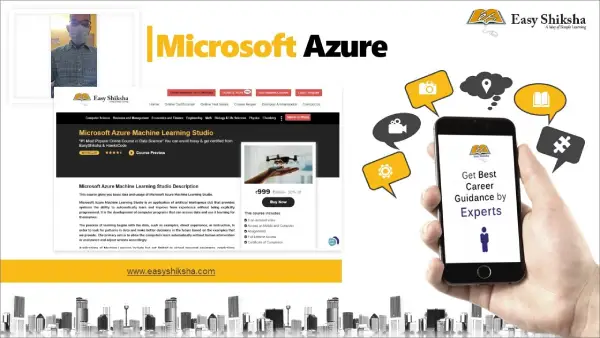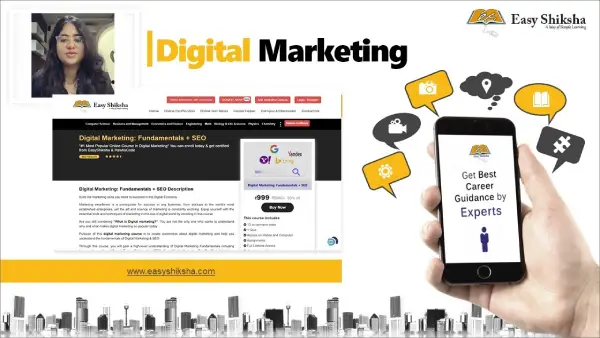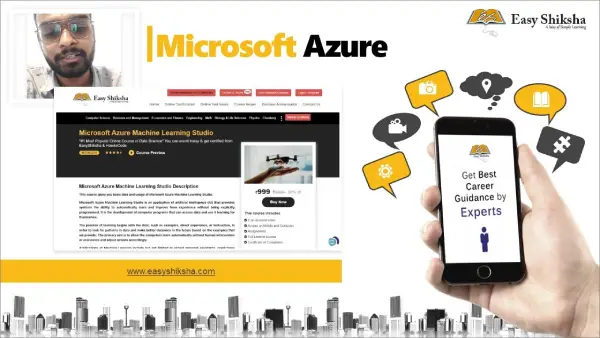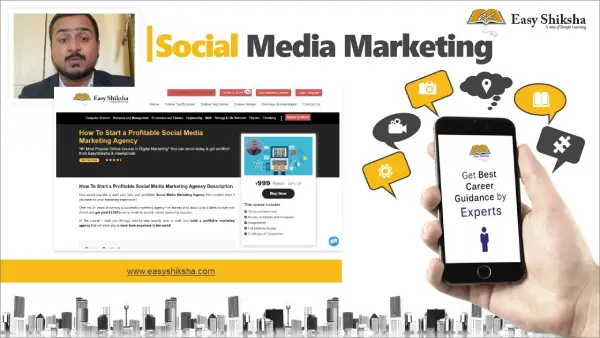This course starts with a quick introduction to AWS and the prerequisites to get you started. It gives you a fair understanding of core AWS services and the basic architecture. Next, you get familiar with Identity and Access Management (IAM) along with Virtual Private Cloud (VPC). Moving ahead, you will learn about Elastic Compute Cloud (EC2) and handling application traffic with Elastic Load Balancing (ELB). We will also talk about Monitoring with CloudWatch, Simple Storage Service (S3), and Glacier and CloudFront, along with other AWS storage options. Next, we will take you through AWS DynamoDB – A NoSQL Database Service, Amazon Simple Queue Service (SQS), and have an overview of CloudFormation. Finally, you will understand Elastic Beanstalk and go through an overview of AWS lambda.
At the end of this course, we will cover enough topics, tips, and tricks along with mock tests for you to be able to pass the AWS Certified Developer - Associate exam and deploy as well as manage your applications on the AWS platform. With the rapid adaptation of the cloud platform, the need for cloud certifications has also increased. This is your one-stop solutions and will help you transform from zero to certified. This course will help you gain technical expertise in the AWS platform and help you start working with various AWS services.
What this Course covers
Chapter 1, Overview of AWS Certified Developer - Associate Certification, outlines the AWS Certified Developer – Associate exam and highlights the critical aspects, knowledge area, and services covered in the blueprint.
Chapter 2, Introduction to Cloud Computing and AWS, elaborates the fundamentals of AWS. The chapter starts by giving you a basic understanding of what cloud is and takes you through a brief journey of familiarizing yourself with the basic building blocks of AWS. It highlights some of the critical aspects of how AWS works and provides an overview of the AWS core infrastructure.
Chapter 3, Getting Familiar with Identity and Access Management, covers all critical aspects of Identity and Access Management (IAM) and provides sufficient details to allow you to work with IAM.
Chapter 4, Virtual Private Cloud, explains how one can create a Virtual Private Cloud and start building a secure network with a number of the components of AWS networking services
Chapter 5, Getting Started with Elastic Compute Cloud, describes what EC2 is and how one can start provisioning servers with various Windows and Linux operating system flavors. It also describes how to connect and work with these servers.
Chapter 6, Handling Application Traffic with Elastic Load Balancing, describes how to create an ELB, how it works, and what the critical aspects of an ELB service are.
Chapter 7, Monitoring with CloudWatch, describes how you can use Amazon CloudWatch to collect and track metrics, collect and monitor log files, set alarms, and automatically react to changes in your AWS resources.
Chapter 8, Simple Storage Service, Glacier, and CloudFront, provides an understanding of Amazon Simple Storage Service (S3), Glacier, and CloudFront services, and takes you through CloudFront, a CDN (Content Distribution Network) service.
Chapter 9, Other AWS Storage Options, touches upon AWS Storage Gateway, which is a network appliance or a server residing on a customer premises. It provides an overview of AWS Snowball, which is a service that accelerates transferring large amounts of data into and out of AWS using physical storage appliances. It also provides a basic understanding of AWS Snowmobile, which is an Exabyte-scale data transfer service used to move extremely large amounts of data to and from AWS
Chapter 10, AWS Relation Database Services, provides an understanding of AWS Relation Database Services (RDS). It explains different types of engine supported by AWS RDS and how to efficiently and effectively create and manage RDS instances on AWS cloud.
Chapter 11, AWS DynamoDB – A NoSQL Database Service, describes various components of DynamoDB with the best practices to manage it.
Chapter 12, Amazon Simple Queue Service, provides an understanding of what SQS is and how to create and manage it with relevant examples.
Chapter 13, Simple Notification Service, talks about fully managed messaging service that can be used to send messages, alarms, and notifications from various AWS services such as Amazon RDS, CloudWatch, and S3 to other AWS services such as SQS and Lambda.
Chapter 14, Simple Workflow Service, provides a basic understanding of SWF, its various components, and how to use them.
Chapter 15, AWS CloudFormation, provides an overview of the AWS CloudFormation service. CloudFormation templates provide a simpler and efficient way to manage your resources on AWS cloud.
Chapter 16, Elastic Beanstalk, gives an introduction to Elastic Beanstalk and describes how to create and manage applications using the service.
Chapter 17, Overview of AWS Lambda, provides an overview of Lambda and describes how it runs code in response to events and how it automatically manages the compute resources required by that code.
Chapter 18, Mock Tests, consists of two mock tests for you to test your knowledge. It tries to cover all the topics from the scope of the exam and challenges your understanding of the topics. Each mock test contains 50 questions. You should try to complete a mock test in 90 minutes.























































